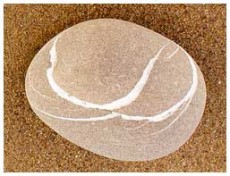Our artistic son Zac told me once after years of dance, singing and acting classes, after playing Curly in his middle school production of Oklahoma, and after years of not fitting in and of begging to quit school, that his path was not mainstream. He said, “Mom, other kids are perfecting their jump shot; I’m working on hitting high A.”
He knew where his body was in space but it was not because he ran football formations. Zac didn’t fit into the football scene and couldn’t understand why a high school featured on the national news cut its arts program and spent more than $50,000 on its football field.
THE ARTIST IN HIM
No exaggeration: our son would not have survived without a strong arts curriculum. He learned that he needed to be at this X or that O not from offensive or defensive plays but because his passion required him to sit stage left so his cast-mates could stand stage right. Teamwork.
He knew why he had to turn this way or speak that way so he could be seen and heard. He learned to listen and to become familiar with facial expressions, social aptitudes he uses today at age thirty-three.
He learned that his posture showed people how he felt and that studying others as they moved on stage could help him read body language. He knows, after all those years of tap, jazz, ballet and modern, how to hold himself up when he walks into a room, world talents many of us never learn in traditional classrooms.
A SCRIPT TO SUCCEED
He was diagnosed with learning disabilities, and refused to try to decipher that “stupid stuff in school.” He discovered reading only because he cared about memorizing scripts: The Emperor’s New Clothes, The Cat in the Hat in elementary school and eventually Oklahoma as an eighth grader, then later The Dining Room, Chorus Line, Hair, Guys and Dolls.
In a recent Press Herald article, Maine Arts Commission chief Julie Richard is quoted as saying, “(arts education) gives kids all kinds of skills that they can use in almost everything in life.” Yes, the arts in education have universal relevance. Our son is now a pastry chef, and no longer sings, acts or dances (ok, maybe in the shower). But it can’t be said that he no longer performs. That arts-focused drive for excellence –work ethic, discipline, connecting with people and a goal larger than self– rehearsed him for life. I have been in his cooking classes where his improvisational gifts keep his students mesmerized, help him think on his feet, and have saved many a recipe that needed quick adjustments. I have seen interviews in which he shows no fear of public speaking. He was once asked about the arts high school he attended and how it influences his life today. Zac said, “As a kid, I wanted to be everything when I grew up: an astronaut, a scientist. I became involved in theater and that training helped me to express it all. I realized (by the life preparation given me through the arts) that I could pretty much be anything I wanted to be.”
NO BOXING HIM IN
Our son’s “learning disabilities” turned out to be his imaginatively-genius learning style, his ability profile: dynamic, outside the box inside which most of us live. He says, “For me, there is no box. Seeing no box is the brain on art. I credit my arts education with where I am and who I am today.”
Yes, the arts help us appreciate beauty, as Zac sang in his leading role, “Oh what a beautiful morning. Oh what a beautiful day.” Paintings of those mornings. Writings about those days. Dances of bigger stories. But if we want more people to grow up being able to revel in the fact that “Everything’s going my way,” we’d best support the learning styles of all kids. And we’d best understand that arts education offers more to the world than pretty things.
Photo credit: Dillion Burke




Amen, amen!
Such a commentary on our current values that a school would cut its art program yet spend $50,000 on its football field. Thanks for sharing this story Susan. I always enjoy your thoughts!